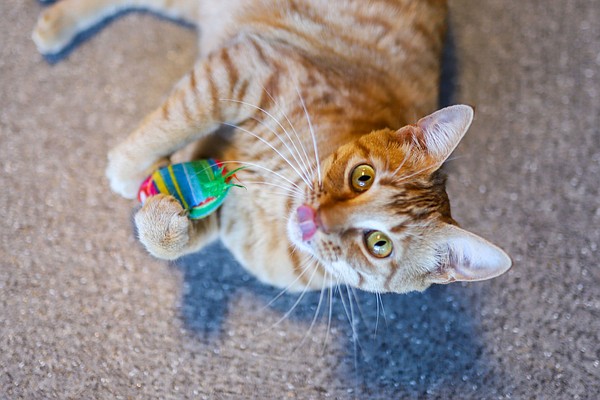Last year, as the COVID-19 outbreak prompted stay-at-home orders and physical distancing protocols, many Americans found solace in new four-legged companions.
The American Society for the Prevention of Cruelty to Animals reported in May that 23 million U.S. households have adopted pets since the start of the pandemic. This includes a lot in central Illinois.
“Adoptions everywhere have reached an all time high, resulting in fewer checks on animals with animals to transfer and fewer people abandoning their pets,” said Holly Crotty, director of the Tazewell Animal Protective Society in Beijing. .
Becky Spencer, director of animal welfare services for Peoria County, said adoptions from the Peoria shelter continued to increase. In 2020, PCAPS found new homes for 730 animals. By the end of last week, that number rose to 926 for this year.

Following:Woodford County Sheriff‘s Deputy Helps Stray Cats Because His County Doesn’t Want To
In May, USA TODAY reported that as pandemic restrictions have eased, a tendency for adopted animals to be returned to shelters. However, staff at local animal shelters like TAPS and PCAPS have not noticed an increase in animal surrenders over the past year. Spencer said during conversations with colleagues at other animal shelters across the United States, she noticed a general trend in which new pet owners were more attached to their pets.
“They found their animals to be comforting and wanted to hold them more tightly,” added Spencer. “It’s something we’ve seen nationwide. “
Crotty said TAPS has focused on responsible adoptions throughout the pandemic because staff there anticipated the possibility of more pets being returned as pandemic restrictions relaxed. However, she has noticed that more and more animals have entered the shelter system in recent weeks.
Last week, TAPS welcomed 60 animals. While there has been no pandemic-related increase in pets returned to TAPS, Crotty noted that there are still some pets that are returned to shelters after being adopted. Some owners, she said, are being abandoned because their owners failed to adopt responsibly, didn’t consider returning to normal work schedules, or didn’t know how to train or socialize their new ones. pets.

“Puppies and kittens don’t breed on their own,” Crotty said. “People often ask if they are good with children. In large part, their behavior will depend on the training and socialization they receive as they are raised. Puppies and kittens have sharp fingernails and sharp teeth and should be socialized not only with toys, but also with interactive games. They will be destructive and will need patience. If they scratch themselves while playing, a family shouldn’t jump to the assault and bring them back to safety or rescue. Families need to engage in training and socialization. New pets, regardless of where they come from, need months to fully acclimatize to a new home. Do not abandon them.
Following:Don’t Sting Turkeys: Bad Visitor Behavior Disturbs Animals in Wildlife Prairie Park
By the end of 2021, the PCAPS will have collected around 3,300 animals, according to Spencer. While this is an increase from the approximately 2,900 animals that entered the shelter last year, it is still lower than the PCAPS annual average before the pandemic.
“We typically see around 4,000 animals a year,” Spencer said.
 Christ Yoder
Christ Yoder



